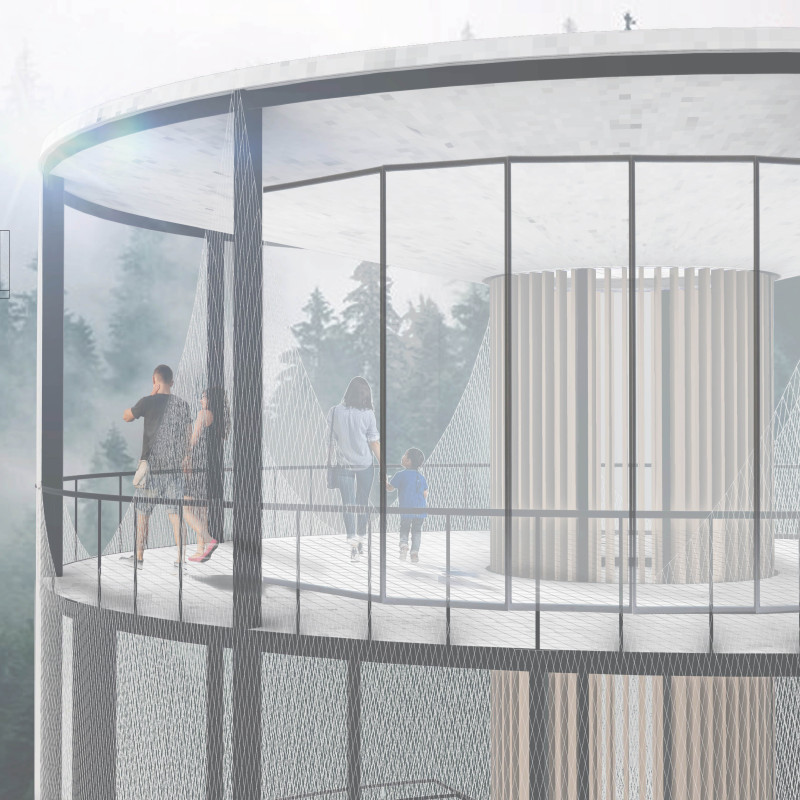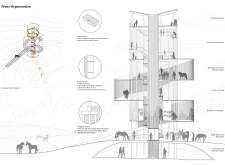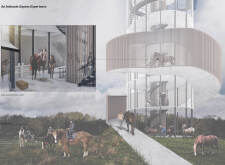5 key facts about this project
Elevated Equine is an observation tower located in the North Vidzeme Biosphere Reserve and the Southern Kurgi Farm. It enhances the connection between horses and visitors interested in ecotourism. The design integrates farming activities with interactive visitor experiences, encouraging a relationship with both nature and the equestrian world. Visitors are guided through various spaces that highlight the daily lives of the horses while offering a unique vantage point of the surrounding landscape.
Concept and Spatial Organization
The layout features interconnected paths that allow people to experience the farm and its natural surroundings. Each area serves a specific purpose, creating opportunities for visitors to learn about horse breeding and grooming in a transparent manner. The Observation Deck offers expansive views of the environment, while the Observation Promenade allows for closer interactions. Dedicated rooms provide spaces for engaging directly with horses and learning more about their care.
Materiality and Function
Material choices in Elevated Equine support both practical use and visual appeal. Metal mesh and wooden louvers serve important functions. Wooden louvers create patterns of light and shadow, framing views while allowing visitors to see horses on the ramps. The metal mesh acts as a lightweight barrier that ensures visitors can still enjoy panoramic views from within the tower.
Sustainability Considerations
Sustainability is a key aspect of the design. Passive mechanical systems, such as rainwater collection and radiant heating, are integrated to enhance the building's efficiency. The concrete floors work as thermal mass, capturing and storing heat, which helps maintain a comfortable environment. This approach underscores a commitment to ecological awareness and supports the goals of ecotourism.
Design Detail
Distinctive features, like the angles of the observation deck and the placement of the louvered screens, respond to the surrounding environment and the needs of visitors. These elements facilitate interactions between people and horses. They enhance how visitors experience the landscape, creating a space where nature and human activity coexist.





















































